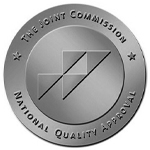
The practice of meditation has been around for thousands of years but has gained popularity in the past decade. The chaos of the past year has left many people with heightened levels of anxiety and depression, and an increased awareness of the importance of mental health.
Trond Harman, a therapist and Licensed Clinical Social Worker at Keystone Pediatrics Chambersburg, explains the practice, its benefits and gives tips for getting started in today’s Take Care article.
Meditation’s History
Historically, the practice of meditation has been associated with religious traditions, particularly Buddhism. Meditation was used throughout Asia but finally began to make its way to other parts of the world during the 20th century and rose to prominence in the West during the 1960s and 1970s. At that time, it was often associated with hippie culture, but people of all walks of life can benefit from its practice.
The best way to get started with practicing meditation is to first understand what meditation is and for that, we need to have a working definition of meditation. The problem is, meditation can be difficult to define as it means different things to different people. I like the definition that was given in an article from Verywellmind.com (September 01, 2020). It defined mediation as: A set of techniques that are intended to encourage a heightened state of awareness and focused attention.
Types of Meditation
The article went on to explain that there are also different types of meditation: concentrative and mindfulness meditation. Concentrative is just as it sounds and involves you focusing all your concentration on one object while tuning everything else out around you. The person may want to focus then on their breathing, a specific word or a mantra to maintain a higher state of being.
Mindfulness meditation involves being in the moment. This is something that I talk with others about all the time. Mindfulness meditation can help with depression and anxiety amongst other things. I describe being in the moment to people as “fishing your brain” back into the present time. If we look at anxiety in the form of a timeline of our life, we don’t have anxiety in the moment. We can have anxiety from the past or anxiety from what we are worried about in the future. We never have anxiety in the exact moment that we are currently living in. We therefore need to reel our brains back into this moment and a great way to do this is by using meditation. By using meditation, we are focusing ourselves into the moment.
Benefits of Meditation
The benefits of meditation can be vast if you take the time to practice it. The benefits can include having better management of symptoms of anxiety and depression as I described previously, but meditation has also been shown to help with sleep disorders, pain management, stress management, increased self-awareness, improved emotional well-being, better memory, improved intelligence, improvement in immunity, a decrease in high blood pressure and it can help you with showing greater empathy for yourself and others.
There is no age limit to meditation, and it can be done by almost anyone. The younger the person though, the more an adult would have to practice it with them.
Getting Started
If you’re interested in trying meditation, the best way to begin is to start slow. The biggest problem with this, or any other coping skill that people might use to manage symptoms, is that they start too fast and expect immediate results. A good rule of thumb might be to try it for five to 10 minutes in the beginning.
Here are a few helpful techniques to remember when you’re getting started: Find a quiet place that is free of distractions and get comfortable. Close your eyes and try to relax your entire body, including your face, paying particular attention to areas that may be tense. Consciously relax those tense muscles. Next, try to clear your mind and focus on your breathing. Notice how your body feels as you breathe in and out. Try to not judge your thoughts or suppress your feelings. The mind is going to wander, and it is something that you need to accept. When you find your mind wandering, it might be helpful to focus on something like your breathing, to bring your attention back. Don’t judge your intrusive thoughts; instead just notice them and refocus your mind.
The best tip might be to set a schedule for meditating. A few pointers for changing your routine are to remind yourself that it takes approximately 30 days to change your routine and the best way to change a routine is to do it in the morning.
Remember that it takes time and practice to become good at anything and meditation is no different. If you start slow and stick with it, you will able to enjoy the many benefits that it offers.
This article contains general information only and should not be used as a substitute for professional diagnosis, treatment or care by a qualified health care provider.




